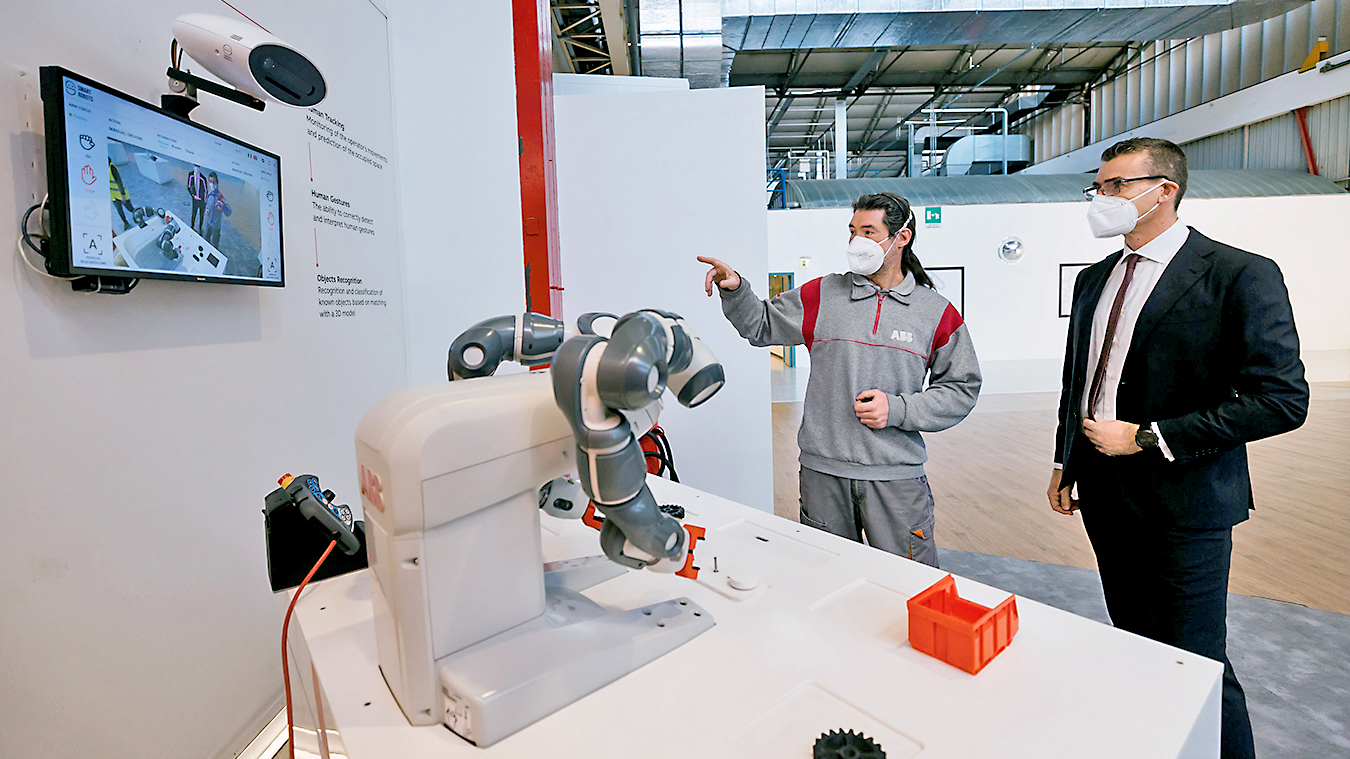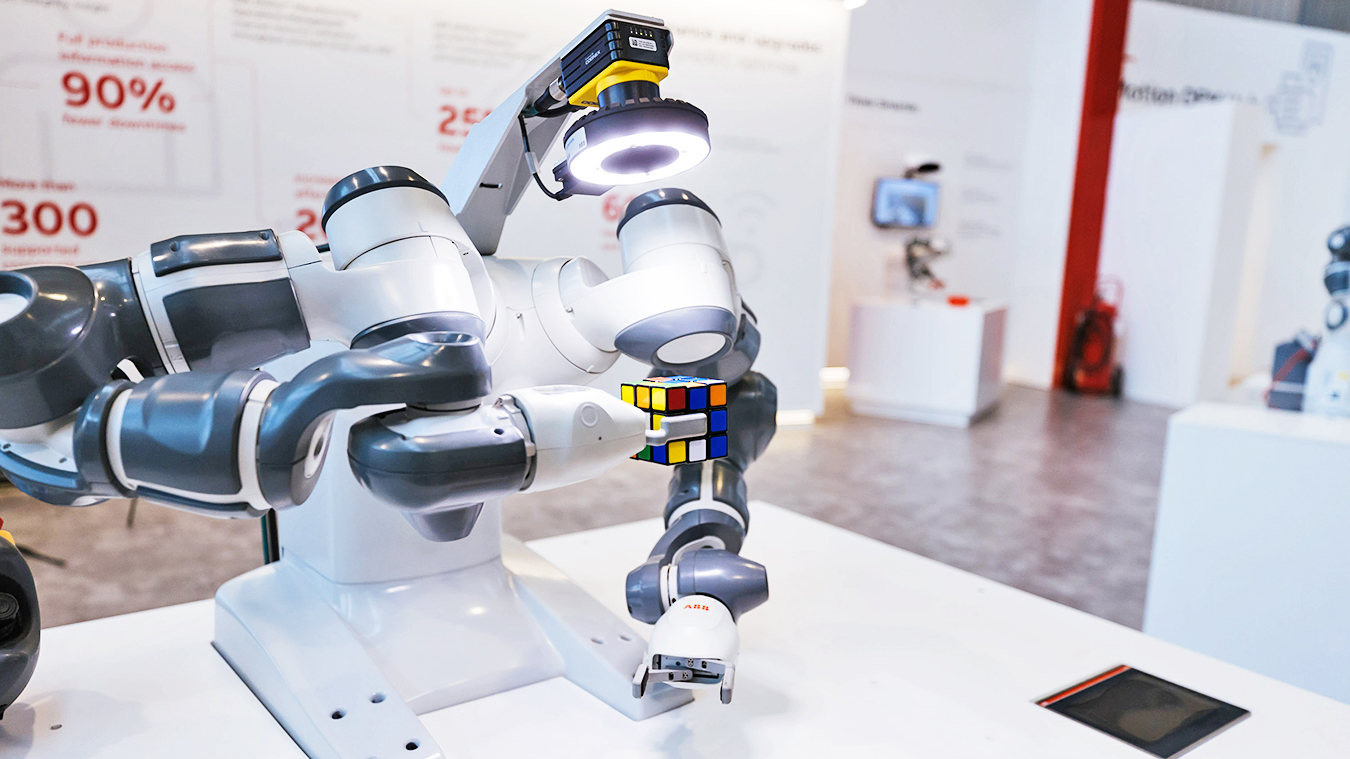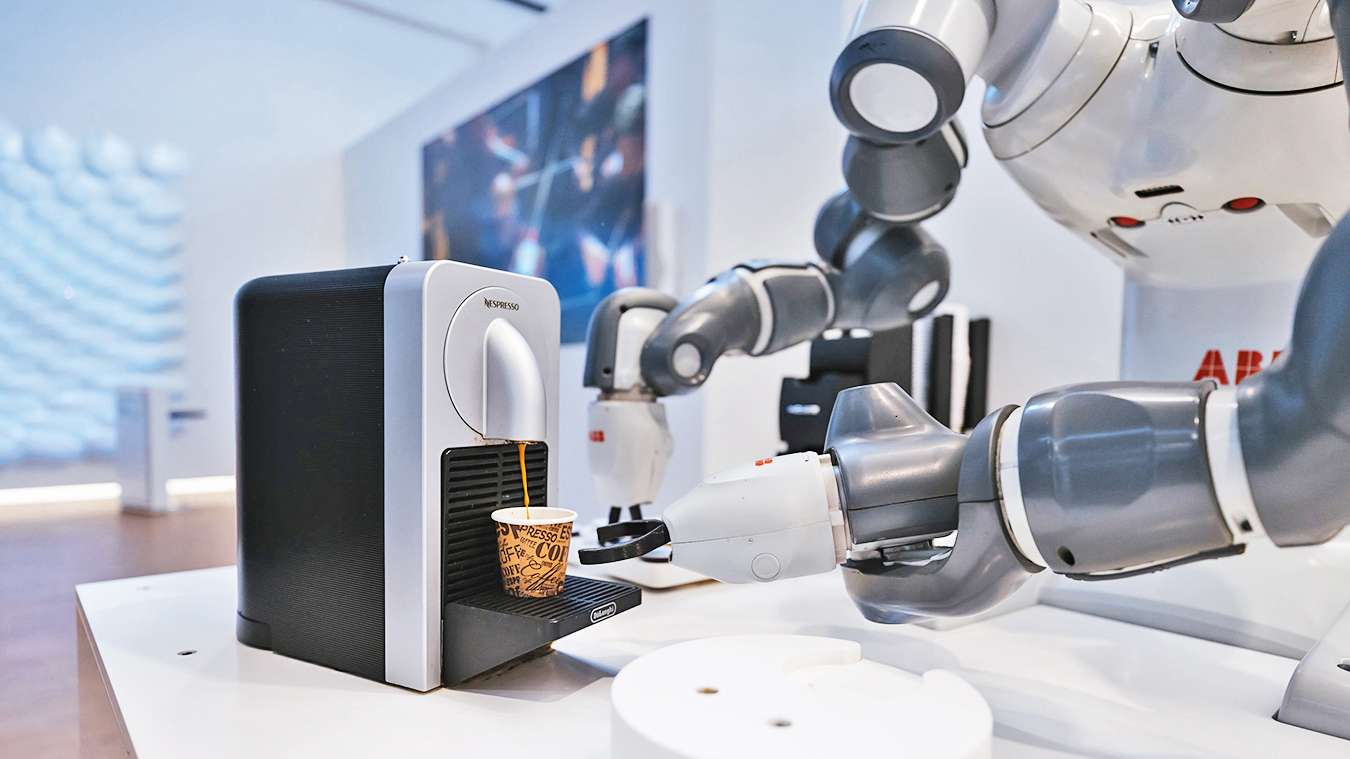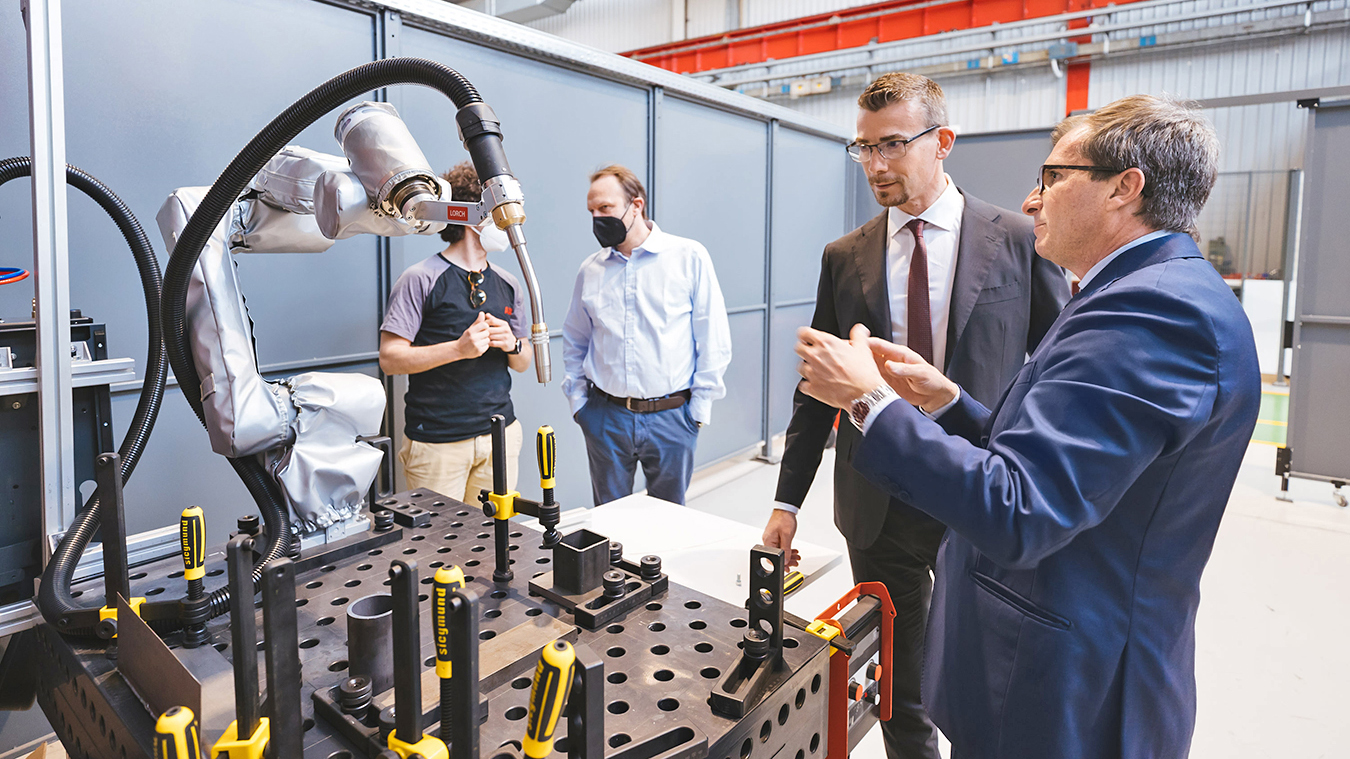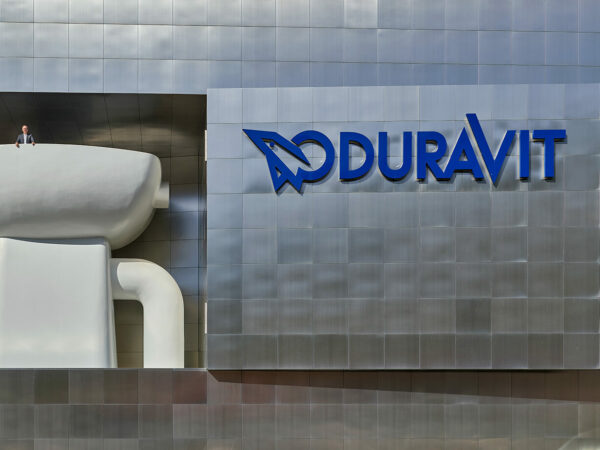New Jobs
for Robots
Industry, services, and trade have been seeing a continuous rise in the use of robots for years now. The trend shows no sign of abating, for the simple reason that robotics makers like ABB keep finding new jobs for their products.
11/2022

Robots weld, solder, paint, transport, and work hand in hand with people in many ways. They have become a veritable fixture in industry and the service sector. A glance at the numbers reveals the importance of these technical assistants, especially in industry. According to the International Federation of Robotics (IFR), around one million robots were in use worldwide in 2010. This figure tripled to more than three million by 2020. That doesn’t surprise Leonardo Leani, Division Manager for Robotics & Discrete Automation at ABB in Italy. “Companies are installing robots to optimize productivity, lower costs, and ultimately increase their profits. In effect, the robots are making them more competitive—on a sustainable basis.”
Robots are indeed moving into ever more areas of application. The e-commerce boom of recent years has spurred the rise of autonomous, intelligent, and secure systems for loading and unloading packages. New possibilities are also arising in connection with e-mobility. In many places, for example, charging processes for electric vehicles are facilitated by automated assistants. Together with the U.S.-based company Dorman, ABB has succeeded in automating the remanufacture of electric car batteries—at an impressive rate. With robots, manufacturing time can be shortened by 66 percent and the daily output of “battery packs” can be tripled.
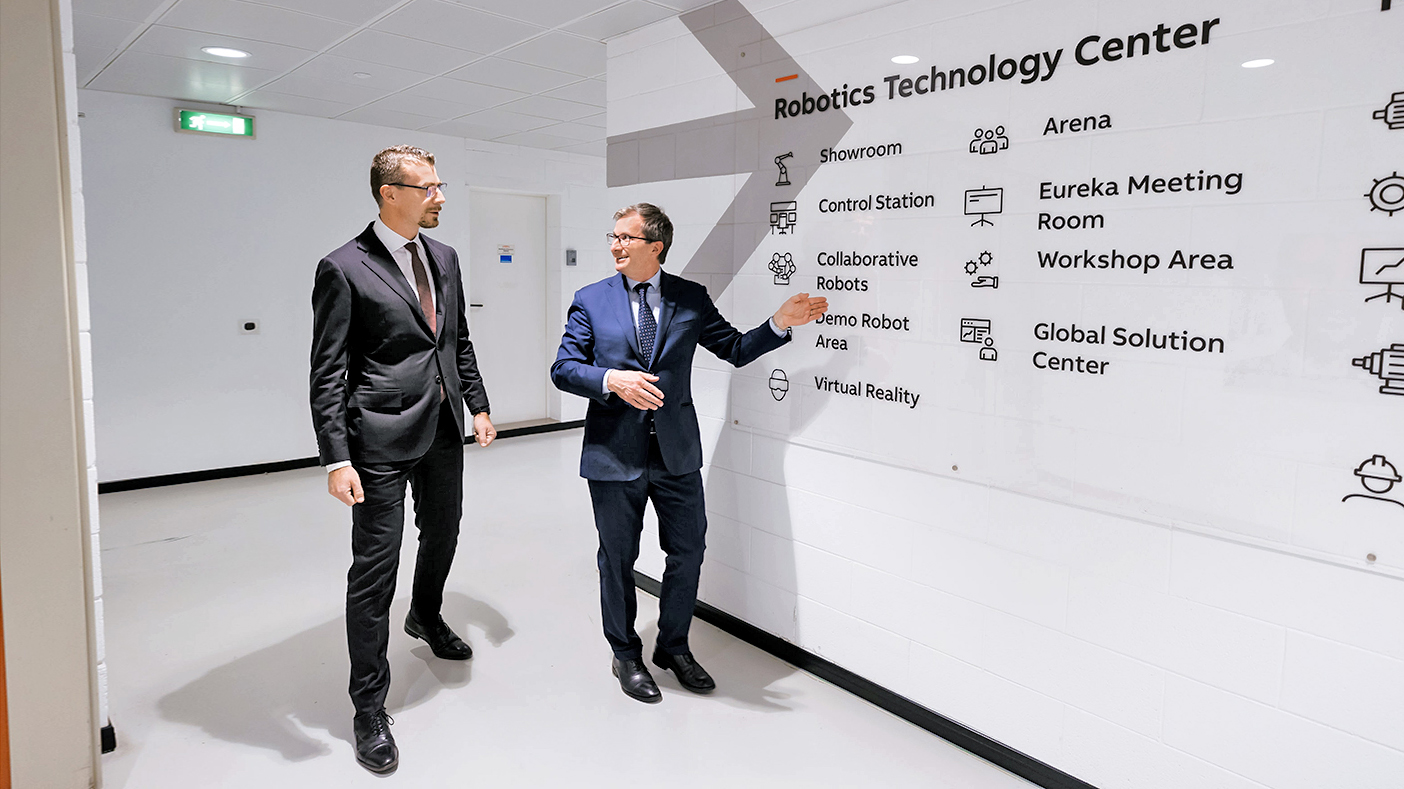
In addition, robots are incorporating ever more innovations from related technologies such as artificial intelligence, machine learning, cloud computing, and 5G mobile communications. Around ten times faster than their 4G predecessors, 5G systems can transmit higher volumes of data without time lags. This in turn encourages new Industry 4.0 solutions and also enables robots to be used in teleoperations.
Higher productivity thanks to robots
Despite the benefits they offer to industry now, robots were the cause of some concern in their early days. Claudio Brusatori, Partner at Porsche Consulting Italia and head of the ABB client team, recalls the fear that machines might end up marginalizing humans. But instead of displacement, ever more industrial strategies have people and robots working together. “User-friendly, simple, agile, and quick-response robots are now being designed to interact closely with humans,” he says. “They’re evolving from tools into highly developed and collaborative machines—that enhance processes and promote employee well-being.”
Even if robots were to replace humans, that would be in areas we wouldn’t miss, explains Brusatori. “Robots are relieving humans of the need to enter hazardous sites or toxic environments. They can carry heavy loads under adverse conditions and are not impacted by contaminated substances.” Even former skeptics now recognize the benefits robots can offer in terms of sustainable and productive work. Initial reluctance has given way to a new sense of opportunity.
Paradigm shift in production processes
“We’re seeing a real paradigm shift in production processes,” confirms ABB manager Leani. “Robotics have proved to be a simple and versatile means of increasing quality and productivity here in a wide range of industries.” Although more companies want to enjoy the benefits of modern robotics, they are not always willing to invest the large sums needed for high-grade technical systems. Manufacturers like ABB have responded to this stance by offering new sales models—including rentals for defined periods of time—to attract customers, including those cautious about their cash flow levels.
Long-term developments like Europe’s shortage of qualified workers give Leani yet more reason to believe companies will continue the trend toward “robot colleagues.” A survey of 1,650 international decision makers in the industry conducted by ABB and the market research institute 3Gem Global Market in January 2021 underscores this trend as well. Some 85 percent of its respondents consider the Covid pandemic to have catalyzed wider use of automated technologies. Nearly as many (84 percent) expect their companies to introduce robots or other automated systems within the next decade, or to further expand their existing systems.
Sales data from IFR present a more subdued picture, however. The numbers of industrial robots installed in 2019 and 2020 are considerably lower than those for 2018. A record number of 422 systems was installed in 2018, but only 382 in 2019. However, the number of systems delivered under Covid in 2020 then remained stable at 384.
Additional factors could contribute to uncertainty on the market. A tectonic shift in the customer structure for industrial robots took place in 2020. Ever since the first industrial robots were sold to General Motors in 1961 and installed at its plant in New Jersey, the automotive industry has been the largest buyer of these technologies. In 2020, however, the role of premium client was assumed by the electronics sector. The repercussions of this changing of the guard cannot be predicted with any certainty at present.
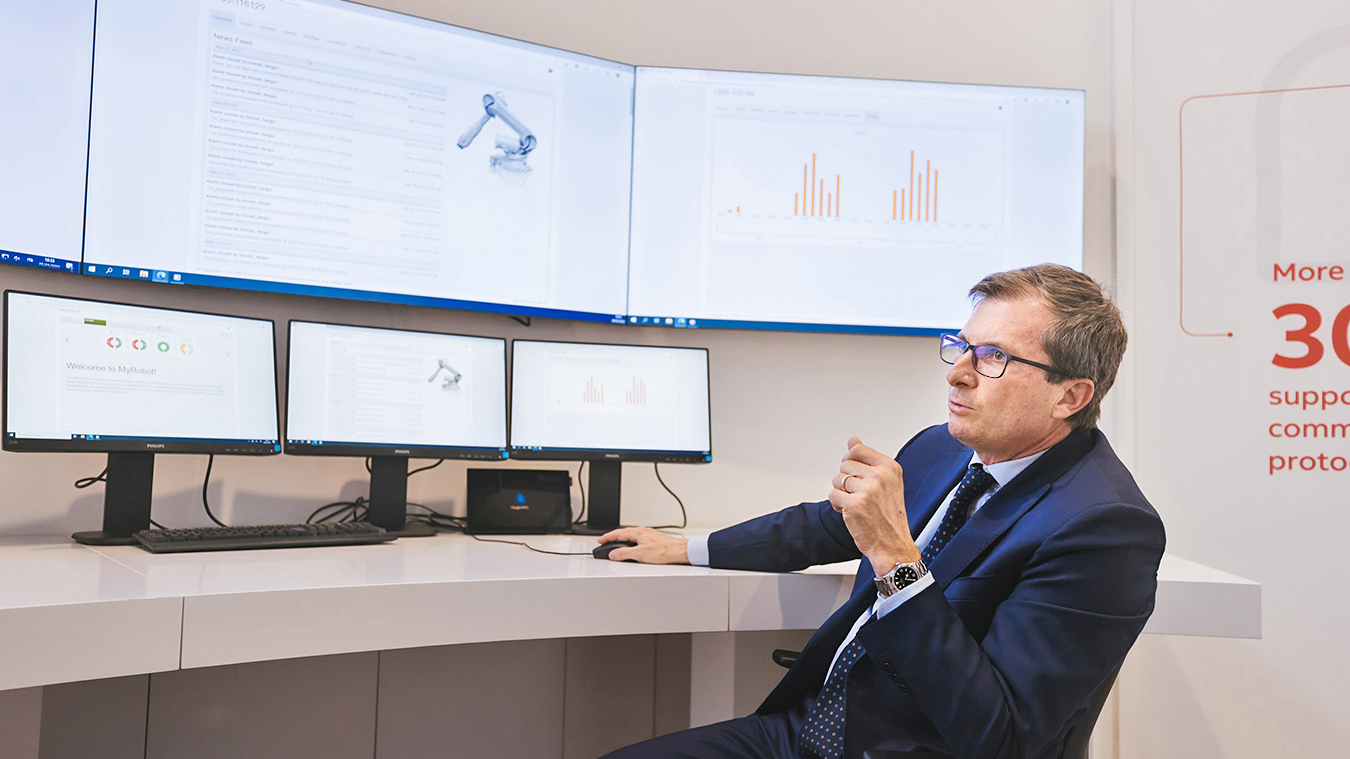
ABB seeks to significantly lower customer carbon emissions
Leani and his colleagues aim to foster sustainability not only in sales. ABB also wants to shoulder responsibilities and help lower carbon emissions. Leani has set ambitious targets. He wants to help his customers reduce their annual carbon emissions by at least 100 megatons by 2030. That’s approximately equivalent to the annual emissions of 30 million cars or 40 coal-fired power stations. “This is a way to achieve carbon neutrality at all our plants and lower emissions along the entire supply chain.”
Leani is charting a modernizing course in other areas as well. He places a premium not only on employee and contractor satisfaction, but also on gender, generational, and LGBTQ+ diversity and equality at the company. “In terms of gender equality we’re trying to even our numbers for managers as well as employees by 2030,” he says. Promoting a good working environment seems like an excellent idea when there’s a shortage of skilled workers—especially in areas where robots cannot yet be used.
The ABB Group
Founded in 1988, the ABB Group and its predecessor companies can look back on more than 130 years of outstanding innovations. The company’s origins lie in the merger of ASEA and BBC, which were founded in 1883 and 1891, respectively. Represented in more than 100 countries, ABB Robotics is active in the robotics, energy, and automation sectors. These are subdivided into four macro-fields: electrification, process automation, motion and robotics. ABB has achieved impressive market success with products like the FlexPicker packaging robot designed in 1998, the world’s first truly collaborative robot called the YuMi, launched in 2015, and the ABB Ability, a leading digital solution introduced in 2017 that connects customers with the industrial Internet of Things.
